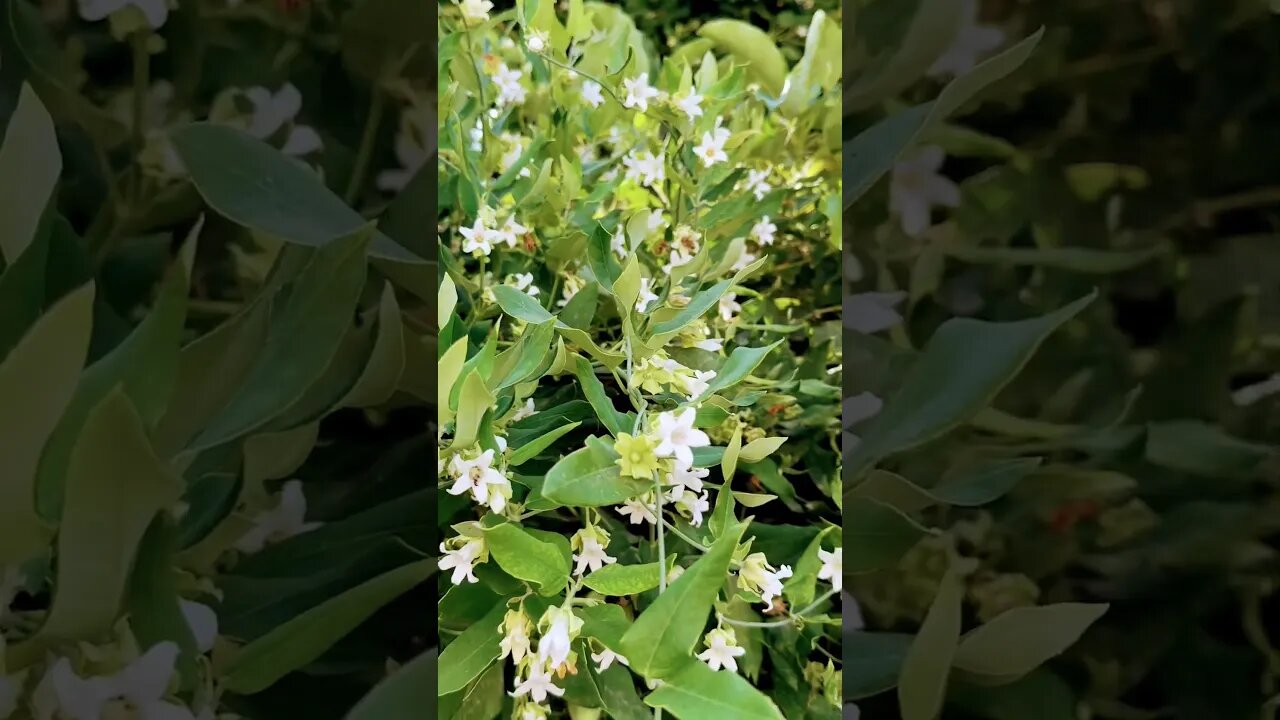Premium Only Content

Everything about the Moth Plant
Moth Plant (Araujia sericifera), also known as the White Bladderflower, Cruel Vine, or Common Moth Vine, is a perennial climbing plant native to South America, particularly in Brazil, Paraguay, Argentina, and Uruguay. It has been introduced to other parts of the world, including Australia, New Zealand, and parts of Europe, where it is considered invasive due to its ability to crowd out native species.
Characteristics
The plant is known for its fast growth and vigorous nature. Its stems can climb over other vegetation, reaching a height of up to 7 meters.
The leaves are opposite, oval-shaped, and have a green glossy appearance. The leaf edges are entire and the leaf base is cordate (heart-shaped).
The plant gets its common name from the moth-like appearance of its flowers. These are waxy white, sweetly scented, and typically bloom in the evening to attract moths for pollination. Following flowering, the plant produces large, bladder-like seed pods that contain numerous black seeds with silky tufts of hair that facilitate wind dispersal.
Impact
Despite its attractive flowers and fragrance, Moth Plant is considered a weed in many areas where it has been introduced. It can form dense infestations that smother and kill other plants, thereby reducing biodiversity. Its ability to produce a large number of seeds, combined with its robust climbing growth habit, allows it to spread quickly and over large areas. Control can be challenging due to the plant's ability to regrow from root fragments.
Control Methods
Control methods for the Moth Plant can vary depending on the specific situation. Manual control methods can include hand-pulling or digging out the plant, including as much of the root system as possible. For larger infestations, chemical control might be necessary. Always check with local regulations and guidelines when considering chemical control, as some substances might be restricted or require special permits.
In gardens, it's recommended to monitor the area for new growth and remove any seedlings immediately. It's also advisable not to plant it due to its invasive potential, even if it's not currently considered a problem in the local area.
-
 LIVE
LIVE
NEWSMAX
4 hours agoThe Rob Carson Show LIVE (04/29/2025) | Call 1-800-922-6680 | NEWSMAX Podcasts
587 watching -
 1:03:24
1:03:24
Blockchain Basement
2 hours ago🚨Arizona Bitcoin Reserve SIGNED! (Will Governor Strike IT DOWN?!)
6.74K -
 UPCOMING
UPCOMING
The Tom Renz Show
53 minutes agoMAHA & Fighting Back With NHF
4.84K1 -
 LIVE
LIVE
TheAlecLaceShow
2 hours agoGuests: Rep. Brandon Gill & Joe Concha | Trump’s First 100 Days in Office | The Alec Lace Show
56 watching -
 1:18:15
1:18:15
The Rubin Report
2 hours agoPress Gasps When Told Trump’s Executive Order for Sanctuary Cities
69.2K63 -
 DVR
DVR
Flyover Conservatives
12 hours agoThe Future of AI: The Good, The Bad, The Ugly - Marc Beckman | FOC Show
15.8K -
 LIVE
LIVE
The Shannon Joy Show
3 hours ago🔥🔥Doctors Of Death. The Transformation Of America’s Health System Into A Death System Post COVID - With Special Guest Dr. Clayton Baker🔥🔥
389 watching -
 DVR
DVR
Bannons War Room
2 months agoWarRoom Live
14.6M3.96K -
 LIVE
LIVE
The Mel K Show
2 hours agoMORNINGS WITH MEL K - 4/29/25 Canada Chooses Globalism, Lack of Accountability is Allowing Chaos, Americans Wide Awake
771 watching -
 46:57
46:57
BitLab Academy
2 hours ago $0.68 earnedEthereum Mega Pump Loading? Bitcoin Price Targets | Altcoin Super cycle?
8.47K